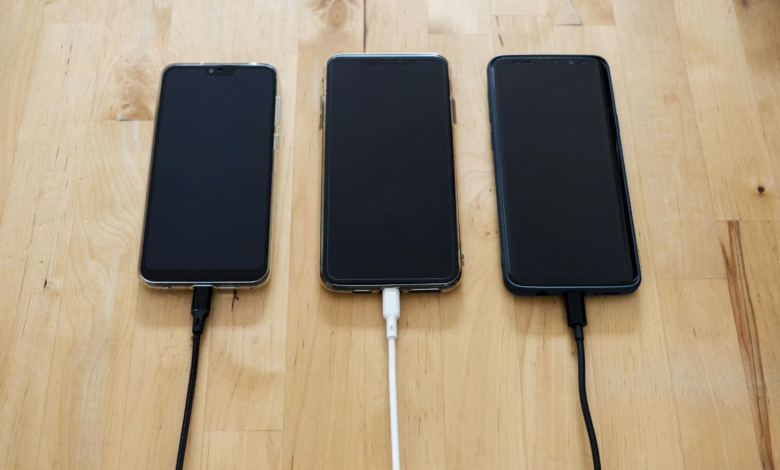The Science Behind Battery Life: Why Your Phone Dies So Quickly

Introduction to Battery Technology
Batteries are crucial for powering our modern gadgets, yet they often fail to last as long as we’d hope. This section explores the basic functioning of batteries and traces the evolution of mobile battery technology.
How Batteries Power Devices
At its core, a battery converts chemical energy into electrical energy. This process involves the movement of electrons from one material to another through an external circuit. The efficiency of this process greatly influences how long a battery can power a device before needing a recharge.
Evolution of Mobile Battery Technology
The journey of mobile batteries began with nickel-cadmium (NiCd) options, which were soon replaced due to their memory effect and environmental concerns. Nickel-metal hydride (NiMH) batteries followed, offering better capacity without the memory issues, but they were still not ideal for power-hungry devices. The breakthrough came with lithium-ion (Li-ion) and lithium-polymer (LiPo) batteries. These types significantly advanced mobile technology with their higher energy densities and longer lifespans. Today, they are the standard in almost all smartphones and many other portable devices, enabling sleeker designs and more extensive functionality than ever before.
Understanding the foundation of battery technology helps us appreciate the complexity behind why our phones may not last as long on a single charge as we would like.
Types of Batteries Used in Smartphones
In the world of smartphones, two main types of batteries are prevalent: Lithium-ion (Li-ion) and Lithium-polymer (LiPo). Each type has its own set of characteristics that affect performance, efficiency, and user experience.
Lithium-ion (Li-ion) Batteries
Li-ion batteries are widely used in smartphones due to their high energy density and cost-effectiveness. They can store a lot of energy relative to their weight, which is crucial for making devices lighter and more powerful. One significant advantage of Li-ion batteries is their ability to handle numerous recharge cycles before their capacity begins to degrade. However, they do have some drawbacks, such as being prone to aging and being sensitive to high temperatures, which can pose safety risks and reduce their lifespan.
Lithium-polymer (LiPo) Batteries
LiPo batteries are similar to their Li-ion counterparts but use a polymer electrolyte instead of a liquid one. This allows them to be lighter and can be shaped more flexibly, which is advantageous for smartphone manufacturers looking to experiment with unconventional phone designs. While LiPo batteries are generally considered safer and less prone to leakage compared to Li-ion batteries, they typically have a lower energy density and can be more expensive to manufacture.
Efficiency and Longevity
Both battery types continue to evolve as technology advances. Manufacturers are consistently working on improving longevity and efficiency through various means, such as optimising battery chemistry and integrating better power management features within devices. The choice between Li-ion and LiPo often comes down to the specific needs of the device and manufacturer preferences based on the intended design and cost considerations.
Understanding these two main types of batteries helps us see why certain smartphones might have better battery performance or why they may degrade differently over time.
Factors That Affect Battery Life in Mobile Phones
Battery life in mobile phones can be influenced by a variety of factors, ranging from individual usage patterns to software configurations. Understanding these factors can help users optimise their device’s performance and extend its battery life.
User Habits and Device Usage
The most direct impact on battery life comes from how we use our phones. High-demand applications such as games, video streaming, and GPS services consume much more power than simpler tasks like reading texts or checking emails. Additionally, the frequency of phone calls, the brightness of the screen, and the volume level can also deplete battery life more rapidly.
Background Applications and Settings
Many smartphones run numerous applications in the background that continuously drain power, even when not actively in use. These might include social media apps, email clients, and system services like location tracking. Moreover, settings like Bluetooth, Wi-Fi, and mobile data, when left on without necessity, can significantly decrease battery longevity.
Operating System and Software Optimisation
The efficiency of the operating system plays a crucial role in battery consumption. Operating systems that are well-optimised for battery efficiency help prolong battery life by managing resources better and ensuring that apps do not consume unnecessary power. Updates to the operating system often include improvements to power management, which can lead to better battery performance.
External Factors
External factors such as temperature can also affect battery life. Batteries tend to drain faster in very cold or hot environments. Additionally, the initial health and quality of the battery at the time of purchase can determine how well it will perform and for how long.
Recognising these factors can empower users to make informed decisions about their device settings and usage habits, potentially leading to significant improvements in battery life. Next, we will explore how different brands manage these challenges and the impact of their unique technologies on battery efficiency.
Battery Longevity Across Different Brands
Exploring how leading smartphone brands like Apple, Samsung, and Huawei manage battery longevity sheds light on their unique technological approaches.
Apple
Apple focuses on maximising battery efficiency through bespoke hardware and software integration. With each iOS update, improvements are often made to optimise power consumption. Additionally, Apple’s features like optimised battery charging and direct battery health monitoring from the settings are crucial in prolonging battery life.
Samsung
Samsung is noted for its innovation with features like adaptive battery saving, which adjusts power usage based on user habits to extend battery life. Their Galaxy series often includes large-capacity batteries enhanced by fast and wireless charging technologies, ensuring that the devices maintain their charge throughout a busy day.
Proprietary Technology and Battery Efficiency
Each brand’s investment in proprietary technology aims not only to enhance the user experience but also to ensure that batteries remain effective for longer periods. Whether it’s Apple’s software-hardware synergy, Samsung’s adaptive features, or Huawei’s AI optimisations, these strategies are pivotal in managing the longevity and reliability of smartphone batteries.
Understanding the diverse strategies of these brands can help consumers make informed decisions based on their specific needs and usage patterns, ensuring satisfaction with battery performance over time.
Tips to Extend Your Phone’s Battery Life
Maximising the battery life of your smartphone is crucial, especially as we rely more on our devices for daily activities. Here are practical tips to enhance battery performance, including the use of mobile phone charging stations, particularly helpful at business conferences, festivals, and other events.
Regular Software Updates
Keep your device’s software up to date. Manufacturers often release updates that improve battery optimisation, enhancing overall efficiency and longevity.
Manage App Usage
Be mindful of apps that use excessive power, especially those running in the background. Use battery usage tools in your phone’s settings to monitor and manage apps that consume the most energy.
Battery Maintenance
Avoid extreme temperatures as they can significantly impact battery performance and lifespan. Also, try to keep your battery charge between 20% and 80% to optimise its health over time.
Utilise Charging Stations
Mobile phone charging lockers have become a lifeline at large gatherings like business conferences and festivals. These stations not only provide a quick power boost but also ensure that attendees stay connected without battery anxiety. Strategically placing these stations at such events helps maintain engagement and productivity, as attendees can rely on their devices being charged when needed.
Implementing these strategies can substantially improve your smartphone’s battery life, keeping you connected and ensuring your device operates efficiently throughout the day.



